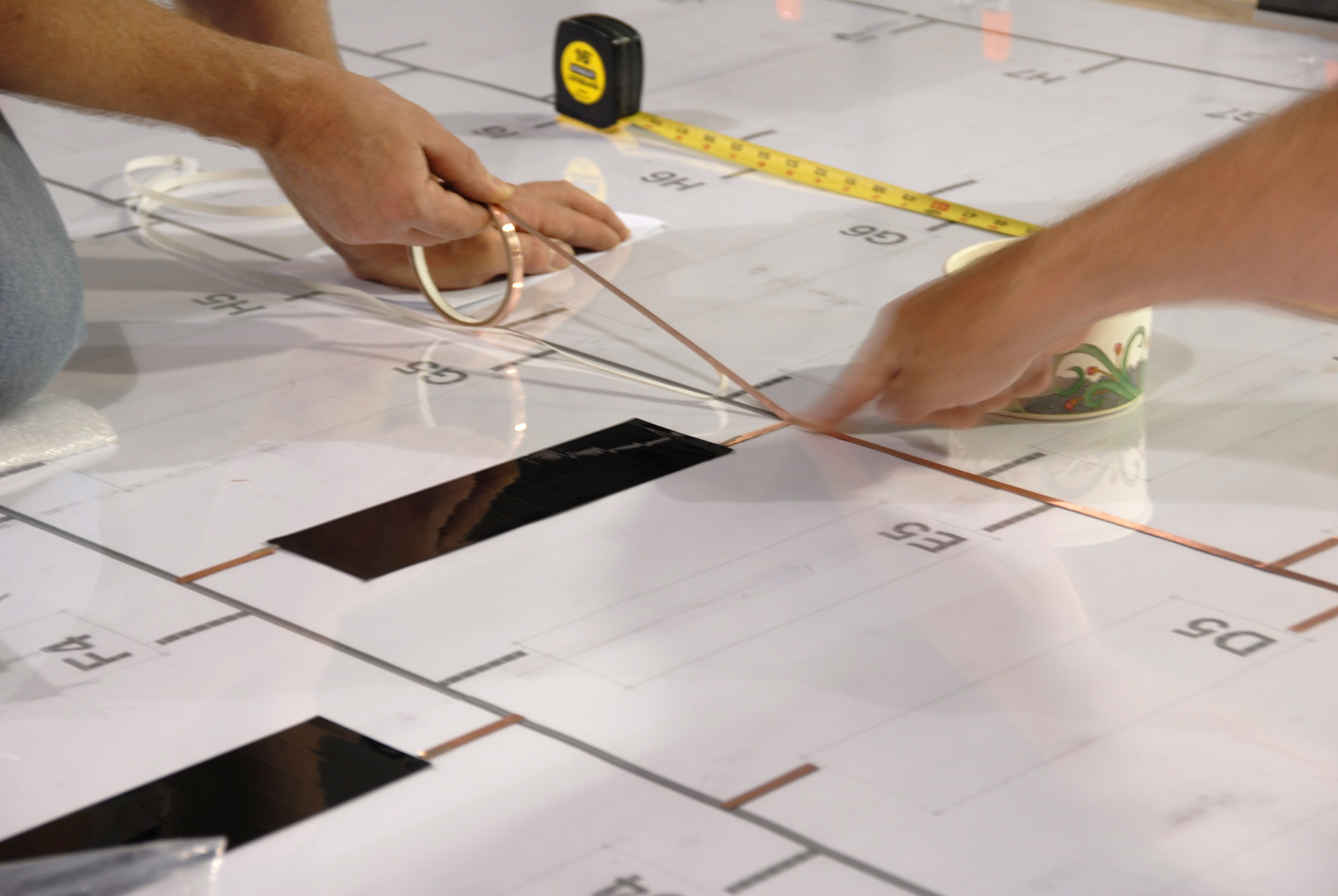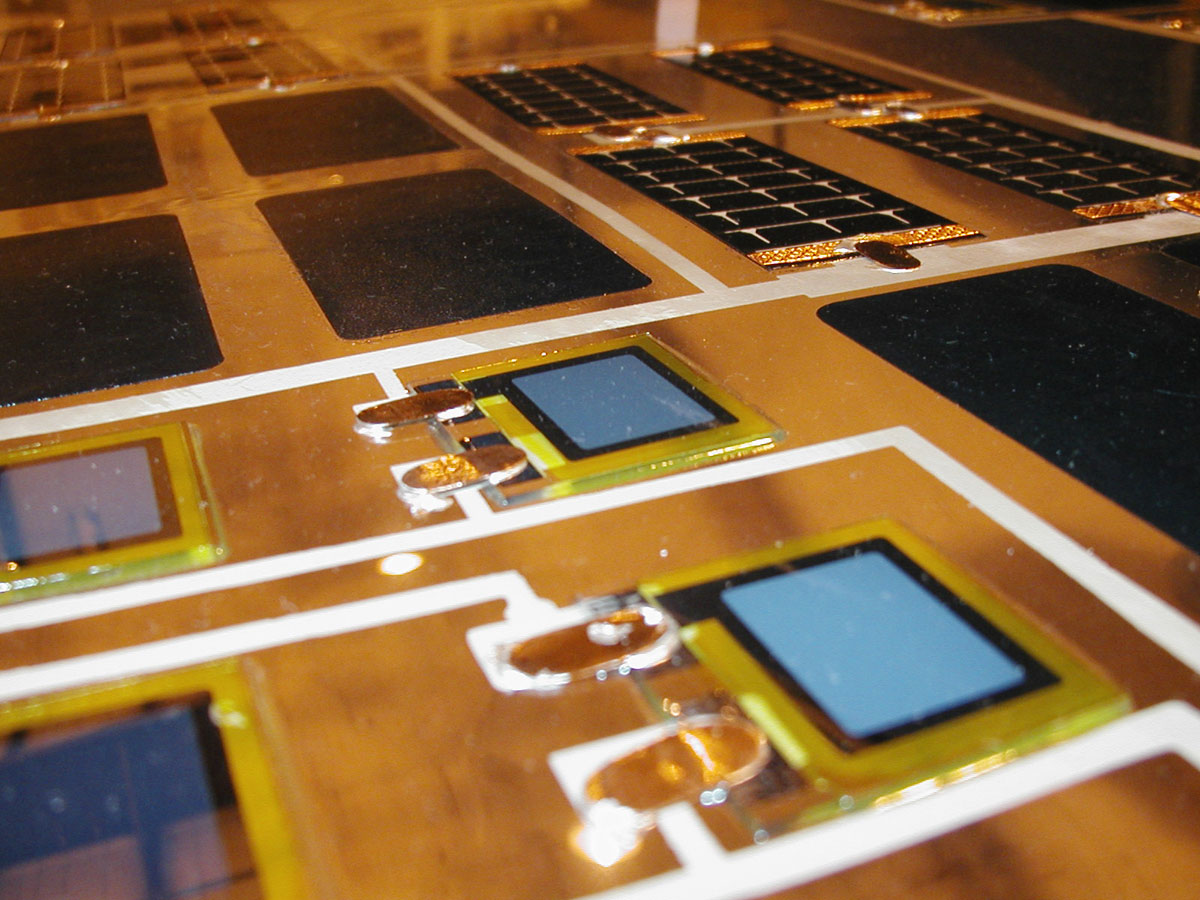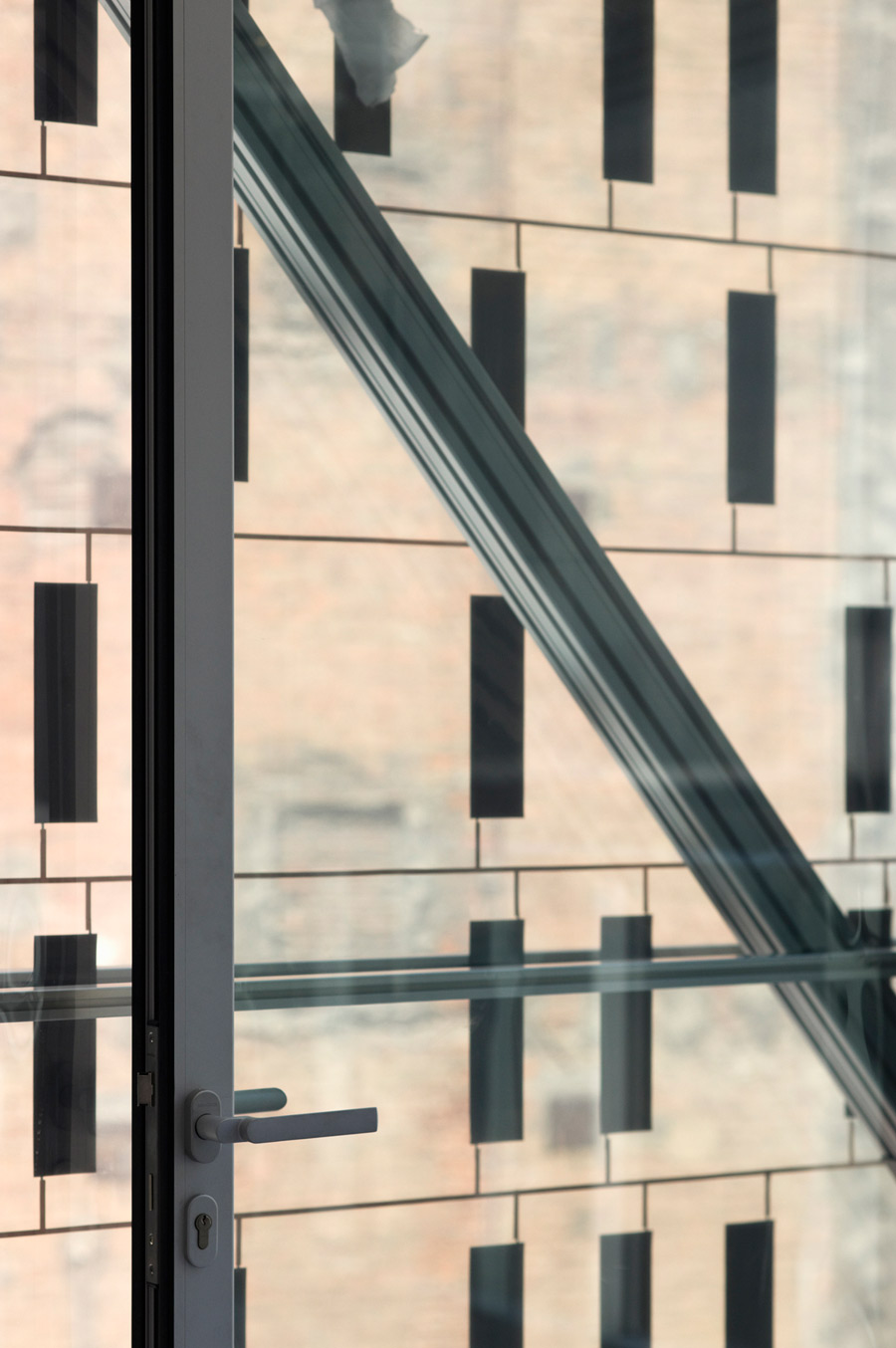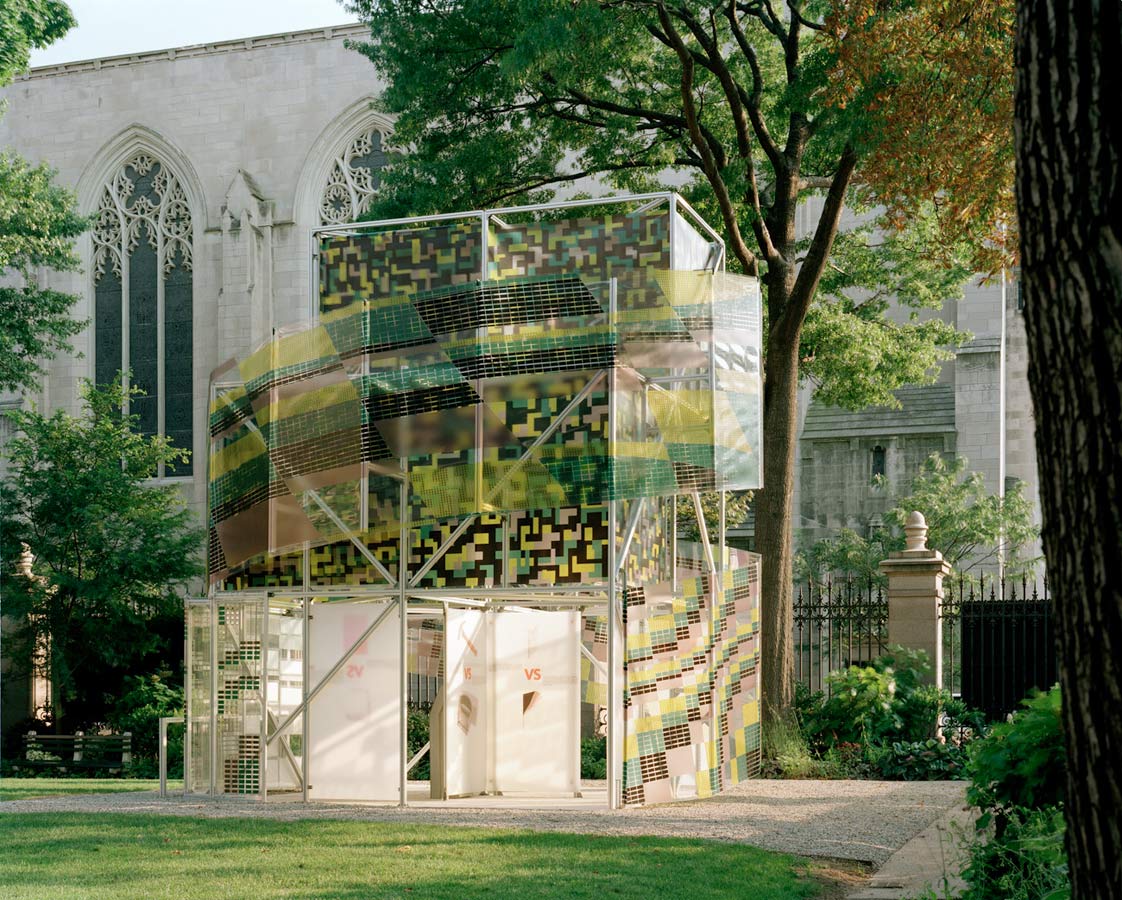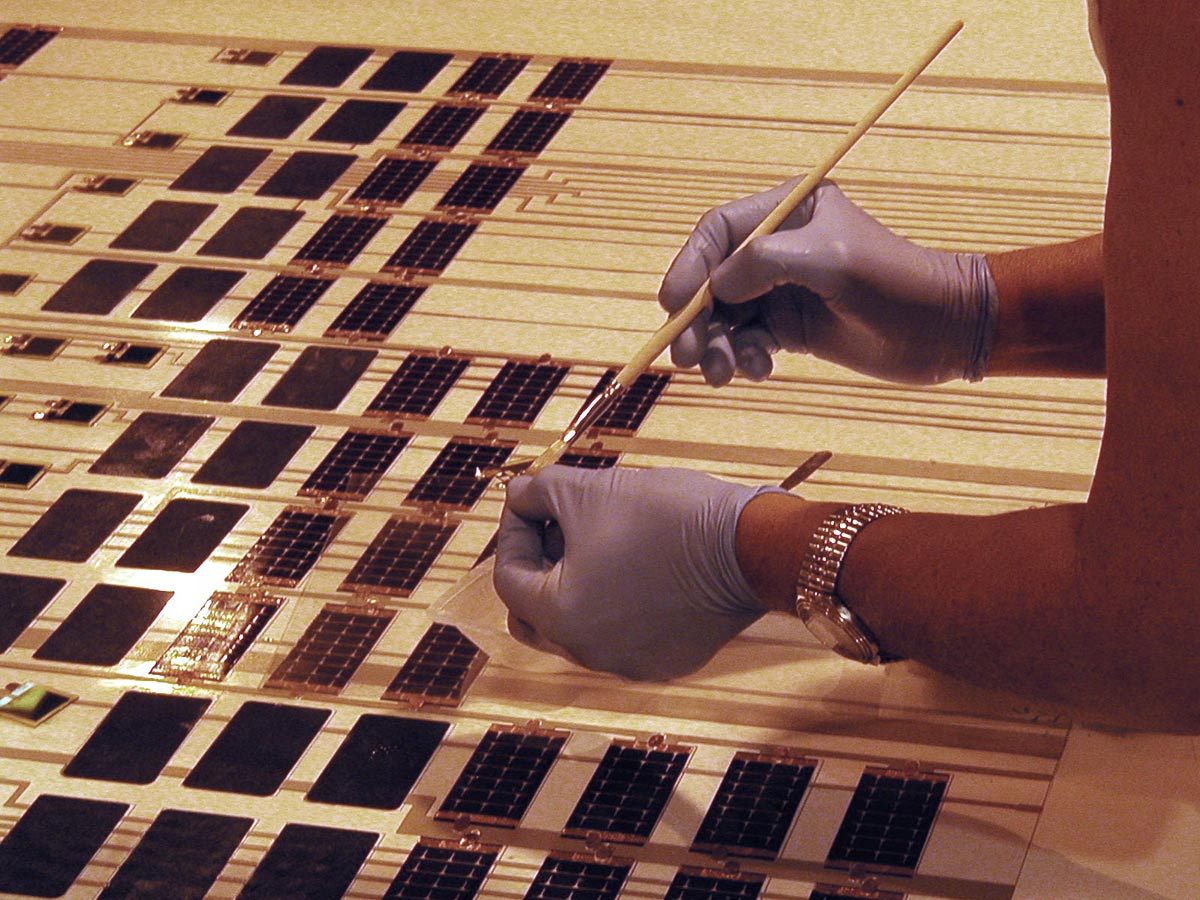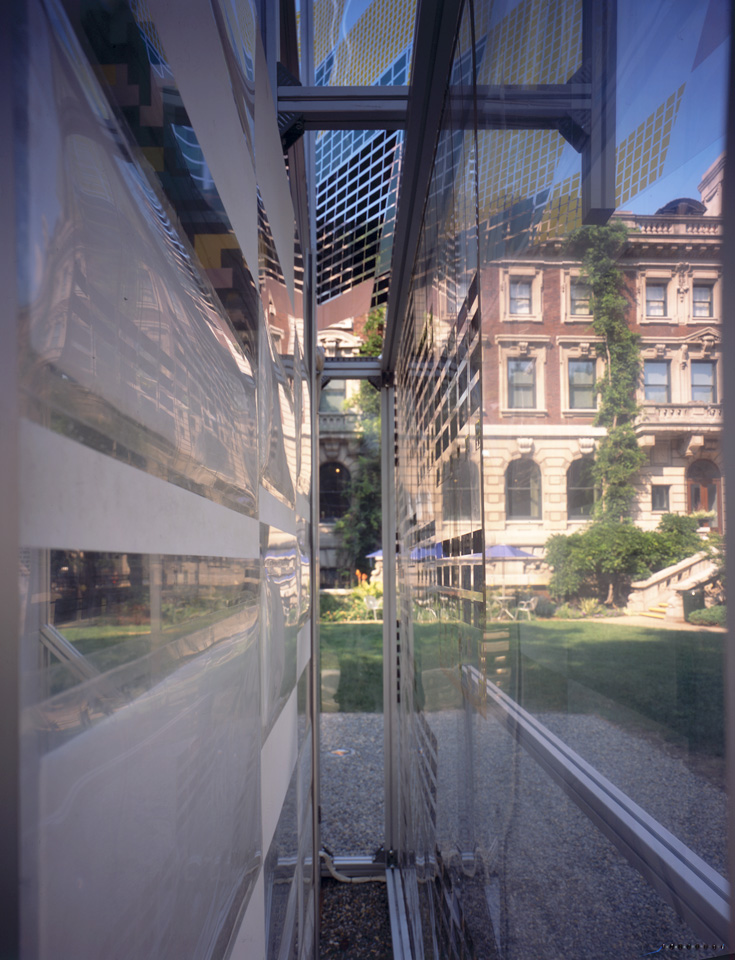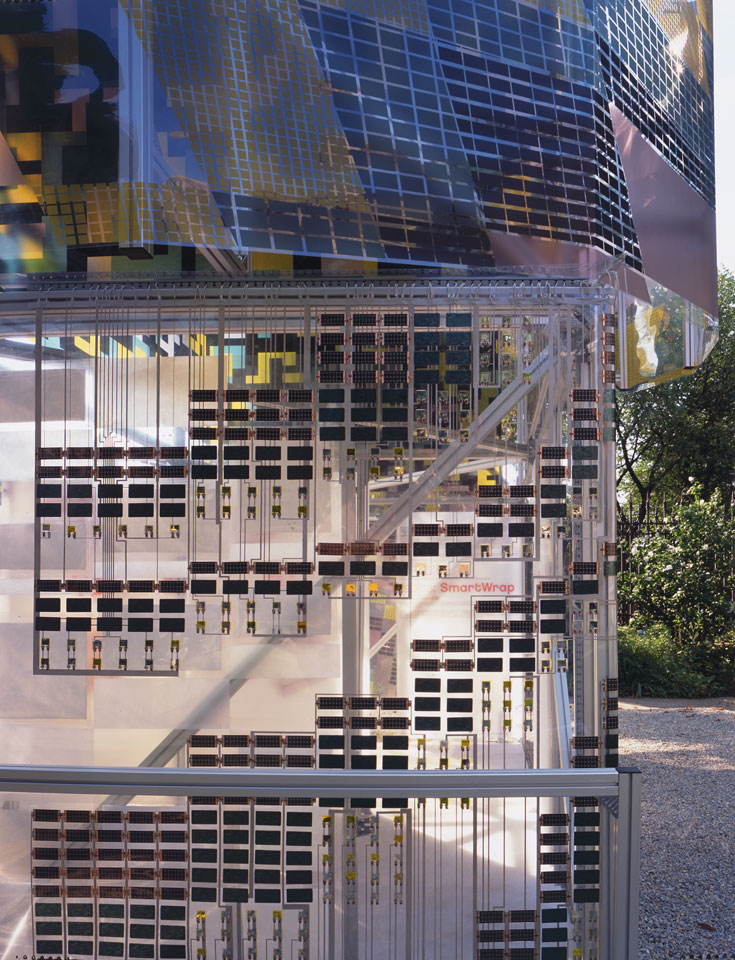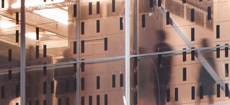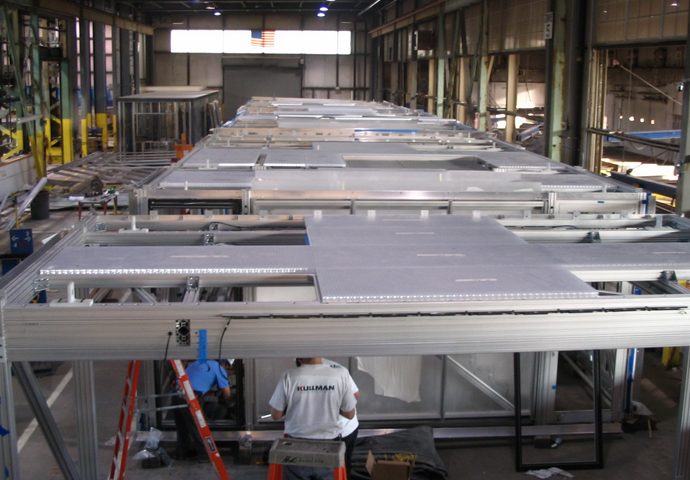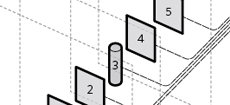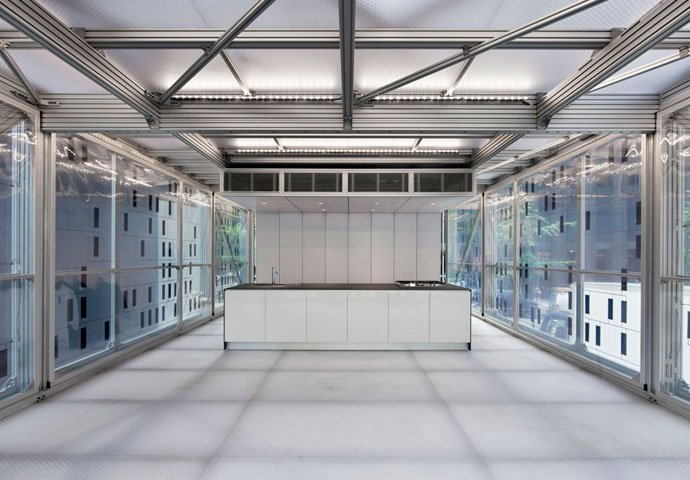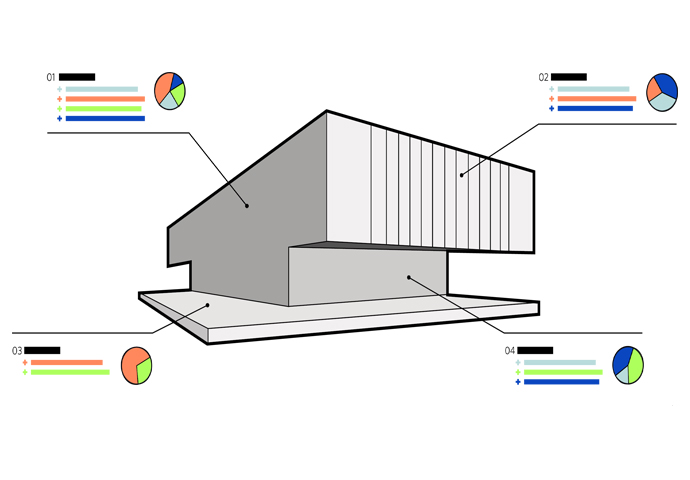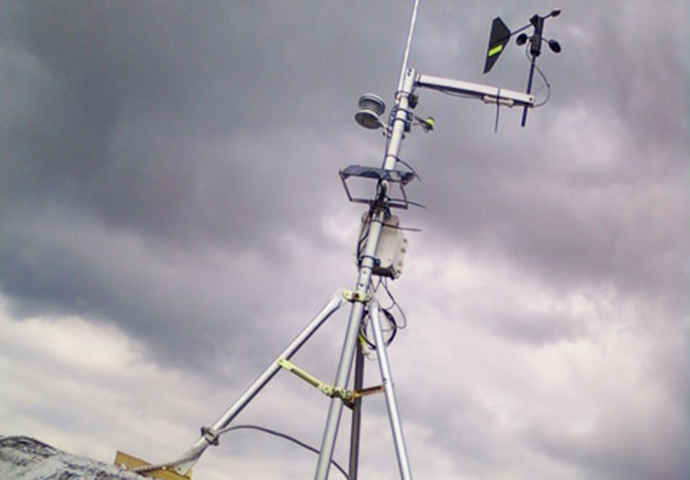How can we use emerging technology to create a building envelope of the future that integrates all the functions of a conventional wall into a thin, transparent plastic film?
Section view of the prototype's thin PET layers as displayed at the Cooper-Hewitt National Design Museum.
© Elliott Kaufman
The desire to reimagine the traditional building envelope, and to replace the expected brick-and-mortar or glass assemblies, propelled the creation of SmartWrap™. It is a mass customizable, energy-generating, lightweight, and sustainable envelope that integrates the segregated functions of a conventional wall into a multi-layer skin of just a few millimeters in thickness, which can be wrapped around the structural frame of a building.
Development
The research and development of SmartWrap™ began in collaboration with industry partners, including DuPont and ILC Dover (best known for creating space suits for NASA). The concept needed to combine several technologies from various industries in order to meet the requirements of shelter, climate control, lighting, information display, and power. Among the substrates researched, polyethelyne terephthalate (PET), a material used in boat sails and soda bottles, proved the best option for shelter against rain and wind. PET is colorless, transparent, and inexpensive, with high mechanical strength. Other layers would contribute additional functionality, including phase change materials (PCMs) to moderate temperature, and organic light emitting diode (OLED) technology to supply light and allow for information display similar to a computer screen. Thin-film photovoltaic cells and batteries that gather and store solar energy would take advantage of large surface areas exposed to the sun on the envelope of a building.
During the development of the first prototype, we pursued emerging systems including phase change materials (PCMs) for temperature control; organic light-emitting diodes (OLEDs) for lighting and data display, which performed in conjunction with organic thin-film transistors; and organic photovoltaic cells to power the OLED system.
© Elliott Kaufman
During the development of the first prototype, some of these technologies were just emerging, and systems had to be attached to the PET with adherents. But over the course of prototyping, we developed a method for applying the circuitry via a printing process similar to silkscreen. Then, the various layers could be deposition printed onto a single composite film. The first prototype was unveiled at the Cooper-Hewitt National Design Museum in 2003.
Seventy-two SmartWrap™ panels were made to enclose Cellophane House™, an off-site fabricated dwelling.
© Peter Aaron/OTTO
Exhibition
In 2008, the original concept for SmartWrap™ was refined and advanced through the design of Cellophane House™, an 1,800-square foot dwelling commissioned by The Museum of Modern Art. To experiment with active and passive thermal strategies, the SmartWrap™ wall assembly consisted of four functioning layers tensioned on an extruded aluminum frame. Each wall panel included an outer transparent PET weather barrier, an inner PET layer with thin-film photovoltaic cells, an inner layer of solar heat and UV blocking film, and an interior layer of PET. A vented cavity between the PET layers was designed to trap heat in the winter and vent it in the summer, reducing the amount of energy required to heat and cool the house. During the exhibition, sensors on the west facade of the house collected thermal data to provide a more complete understanding of its insulative and convective capacity.
Compared to current transparent envelope systems, SmartWrap™ is designed to realize significant environmental benefits. SmartWrap™ is lightweight, resulting in a lower total embodied energy when compared to glass, and its thinness results in large surface-area coverage with a minimal volume of material relative to glass curtainwall assemblies. It can be erected in a fraction of conventional building time, with greater efficiency. At the end of its useful life, it can be easily disassembled and fed into a recycling stream.



